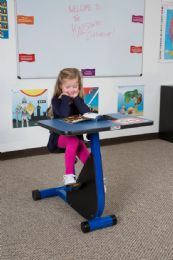

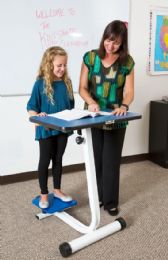

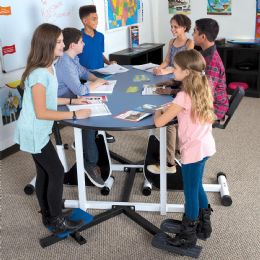

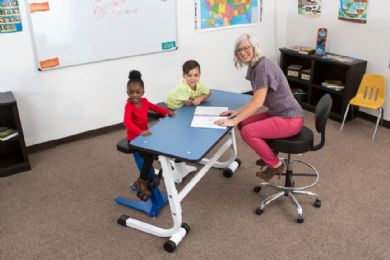
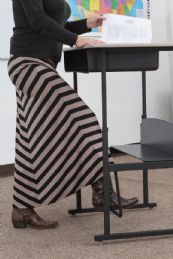
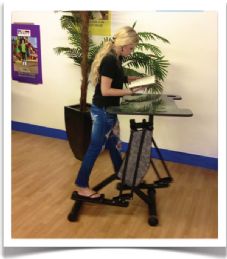
What is Kinesthetic Learning?
Research has demonstrated repeatedly that children are better able to concentrate and retain the information they’ve learned when they are in motion, rather than sitting still. Because everyone takes in information through movement, all of us are kinesthetic learners to some extent.
Kinesthetic learning incorporates motion and activity to improve academic performance, increasing memory and cognition. It utilizes a range of movements, such as standing, bouncing, pedaling, walking and spinning, to help kids release restless energy while they boost their concentration and attentiveness to the lesson.
Although you may think this added activity would result in a more chaotic learning environment, research has actually shown that kinesthetic learning helps to calm behavior. Children can move and twist and spin at will with the help of specialized (and silent-running) kinesthetic classroom furniture, helping them to release excess energy. This reduces disruptive behavior while it also enhances learning focus.
What are Kinesthetic Learning Classrooms?
When the Kidsfit company decided to work with a team of educational consultants, brain research experts, and classroom teachers to develop a new and innovative teaching methodology to enhance learning and interaction for children, this extensive research led to the creation of their kinesthetic classroom furniture line. They have since helped to create kinesthetic classrooms in 47 states!
Their innovative line includes a comprehensive selection of kinesthetic learning furniture specifically designed to keep kids active while they learn. This exciting new teaching modality uses desks, tables, stools and chairs that allow kids to pedal, spin, balance, step/walk, ski, stride, wobble, fidget and rock! This movement allows kids to work off their natural high energy, enabling them to better learn and remember new information.
How to Set up a Kinesthetic Classroom
Because of their success with kids, parents and teachers, kinesthetic learning classrooms are gaining in popularity. It’s estimated that 80% of all students have high kinesthetic learning styles, so it’s no wonder that this equipment works! While it may not be feasible for every classroom to become completely outfitted with kinesthetic furniture and equipment all at once, there are a number of individual kinesthetic product choices that can make a huge difference for students everywhere.
Here is a quick, concise product guide to help educators start turning traditional classrooms into kinesthetic learning classrooms:
Pedal desks and stools - Highly popular, and available in several configurations, silent pedal desks and stools allow children to participate in pedaling while learning.
Kneel and Spin desks - The smoothy spinning seat pad enables kids to twist and spin, giving them a higher level of control over their own learning environment.
Strider desks - Decreasing cortisol, the smooth, gliding backward and forward motion of the quiet strider is perfect for students with higher stress levels, and/or who require continuous movement.
Balance desks - The simplicity of the repetitive flexion and extension required in moving the balance board forward and backward helps to better engage the student in learning, and facilitates the crossing of the body’s midline, a fundamental developmental skill needed to perform multiple everyday tasks.
Standing desks - Kids often prefer standing to sitting still. Standing desks allow them to move around without distracting the rest of the class, while they also enhance concentration.
Stepper desks - The left to right resistance-based movement of the stepper desk improves focus and concentration.
Wobble chairs - This popular kinesthetic seating option is flexible, bending to the child’s moving body, with constant positional changes involving the hips, knees and back.
Variety desks - Versatile and multifunctional, the variety desks facilitate a number of brain-based movements to benefit every learning style.
Ergo Spin desks - This ergonomically-designed spinning seat allows children to sit and spin while learning.
Seated Strider Desks - This strider design enables fidgeting kids to sit and stride while they learn, and it also helps to relieve anxiety.
Seated motion desks - The rocking motion provided by these desks especially enable kids with ADD and ADHD to better concentrate and focus in the classroom. They’re also perfect for youngsters with vestibular/balance issues, and help all users to develop better core strength.
Tabletop standing desks - As one of the simplest and most economical ways to start incorporating kinesthetic learning equipment into the classroom, the tabletop standing desk can be added to existing traditional desks to create a more dynamic, active learning environment.